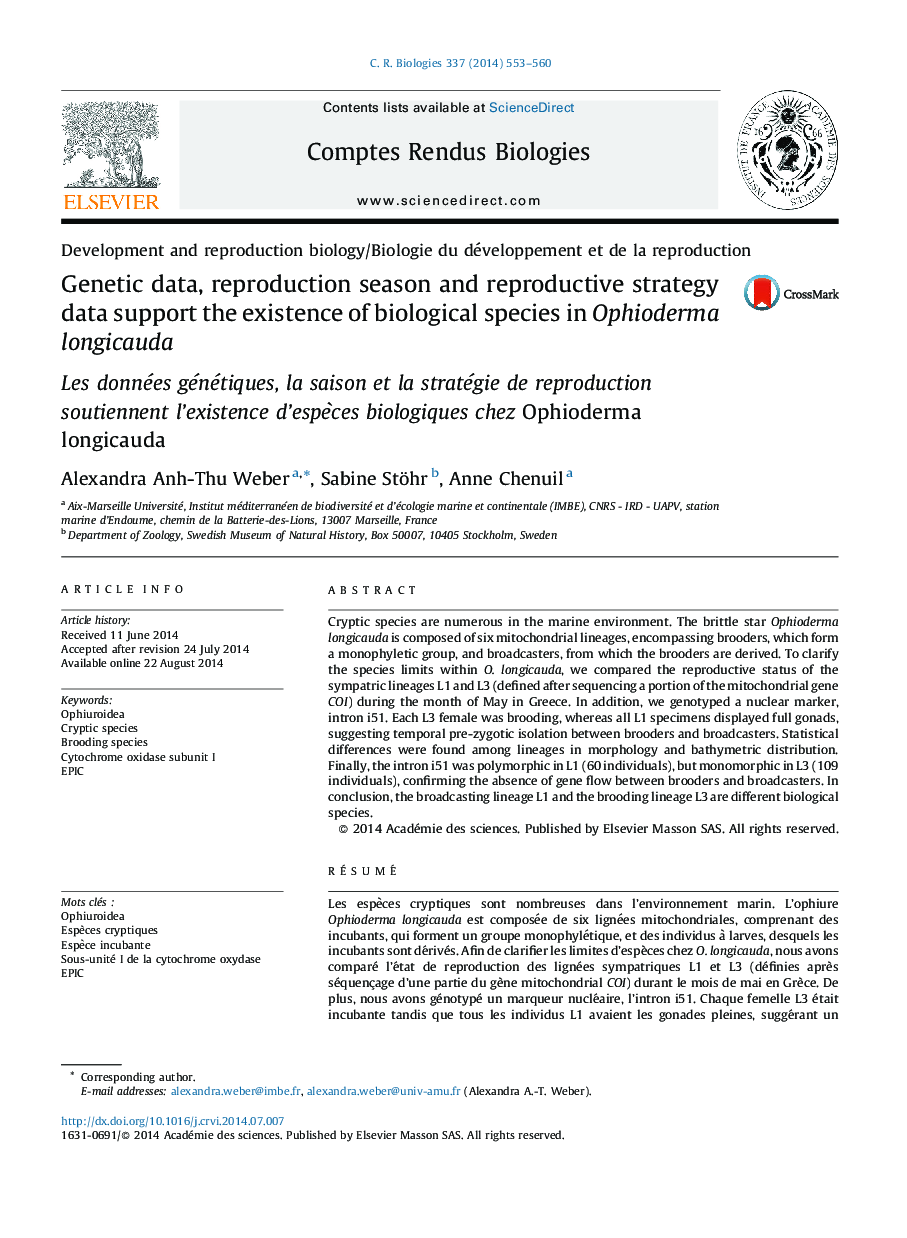| کد مقاله | کد نشریه | سال انتشار | مقاله انگلیسی | نسخه تمام متن |
|---|---|---|---|---|
| 2783462 | 1153747 | 2014 | 8 صفحه PDF | دانلود رایگان |

Cryptic species are numerous in the marine environment. The brittle star Ophioderma longicauda is composed of six mitochondrial lineages, encompassing brooders, which form a monophyletic group, and broadcasters, from which the brooders are derived. To clarify the species limits within O. longicauda, we compared the reproductive status of the sympatric lineages L1 and L3 (defined after sequencing a portion of the mitochondrial gene COI) during the month of May in Greece. In addition, we genotyped a nuclear marker, intron i51. Each L3 female was brooding, whereas all L1 specimens displayed full gonads, suggesting temporal pre-zygotic isolation between brooders and broadcasters. Statistical differences were found among lineages in morphology and bathymetric distribution. Finally, the intron i51 was polymorphic in L1 (60 individuals), but monomorphic in L3 (109 individuals), confirming the absence of gene flow between brooders and broadcasters. In conclusion, the broadcasting lineage L1 and the brooding lineage L3 are different biological species.
RésuméLes espèces cryptiques sont nombreuses dans l’environnement marin. L’ophiure Ophioderma longicauda est composée de six lignées mitochondriales, comprenant des incubants, qui forment un groupe monophylétique, et des individus à larves, desquels les incubants sont dérivés. Afin de clarifier les limites d’espèces chez O. longicauda, nous avons comparé l’état de reproduction des lignées sympatriques L1 et L3 (définies après séquençage d’une partie du gène mitochondrial COI) durant le mois de mai en Grèce. De plus, nous avons génotypé un marqueur nucléaire, l’intron i51. Chaque femelle L3 était incubante tandis que tous les individus L1 avaient les gonades pleines, suggérant un isolement pré-zygotique temporel entre les incubants et les individus à larves. Des différences statistiques de morphologie et de distribution bathymétrique ont été trouvées entre lignées. Finalement, l’intron i51 était polymorphe chez L1 (60 individus), mais monomorphe chez L3 (109 individus), confirmant l’absence de flux de gènes entre les incubants et dispersants. En conclusion, la lignée à larves L1 et la lignée incubante L3 sont des espèces biologiques différentes.
Journal: Comptes Rendus Biologies - Volume 337, Issue 10, October 2014, Pages 553–560